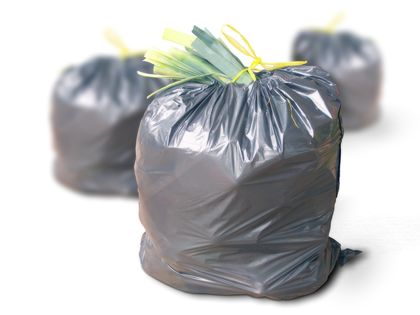Biodegradation

Biodegradation is the decay or breakdown of materials that occurs when microorganisms use an organic substance as a source of carbon and energy. For example, sewage flows to the wastewater treatment plant where many of the organic compounds are broken down; some compounds are simply biotransformed (changed), others are completely mineralized . These biodegradation processes are essential to recycle wastes so that the elements in them can be used again. Recalcitrant materials, which are hard to break down, may enter the environment as contaminants.
Biodegradation is a microbial process that occurs when all of the nutrients and physical conditions involved are suitable for growth. Temperature is an important variable; keeping a substance frozen can prevent biodegradation. Most biodegradation occurs at temperatures between 10 and 35°C. Water is essential for biodegradation. To prevent the biodegradation of cereal grains in storage, they must be kept dry. Foods such as bread or fruit will support the growth of mold if the moisture level is high enough. The microorganisms need energy plus carbon, nitrogen, oxygen, phosphorus, sulfur, calcium, magnesium, and several metals to grow and reproduce. The oxidation of organic substances to carbon dioxide and water is an exothermic (heat-releasing) process. For each mole of oxygen used as electron acceptor (oxidant), about 104 kilocalories (435 kJ) of energy is potentially available. All organisms make use of only part of this energy. The rest is lost as heat. This can be seen in composting when the compost becomes hot. Biodegradation can occur under aerobic conditions where oxygen is the electron acceptor and under anaerobic conditions where nitrate, sulfate, or another compound is the electron acceptor.
Bacteria and fungi, including yeasts and molds, are the microorganisms responsible for biodegradation. Environmental managers want to use biodegradation when it is needed and prevent it when preservation is important. Chemicals are commonly used to treat wood in buildings and other structures to prevent biodegradation. Wooden posts and pilings are treated with creosote or copper compounds to prevent rotting. Compounds that inhibit biodegradation are often added to automobile antifreeze solutions, aircraft deicer formulations, and other products to preserve the original qualities of the product. These products and chemicals can enter the environment and become contaminants. The inhibitors have a negative effect when the product becomes a waste and is to be biodegraded. For example, biodegradation of aircraft deicer formulations in airport runoff is often inhibited because of the benzotriazoles that are present to preserve the formulation.
SEE ALSO B IOREMEDIATION ; S OLID W ASTE .
Bibliography
Alexander, Martin. (1994). Biodegradation and Bioremediation. New York: Academic Press.
Gibson, David T., ed. (1984). Microbial Degradation of Organic Compounds. New York: Marcel Dekker.
Internet Resources
Kansas State University. Great Plains/Rocky Mountain Hazardous Substance Research Center Web site. Available from http://www.engg.ksu.edu/HSRC .
Larry Eugene Erickson and Lawrence C. Davis
Comment about this article, ask questions, or add new information about this topic: